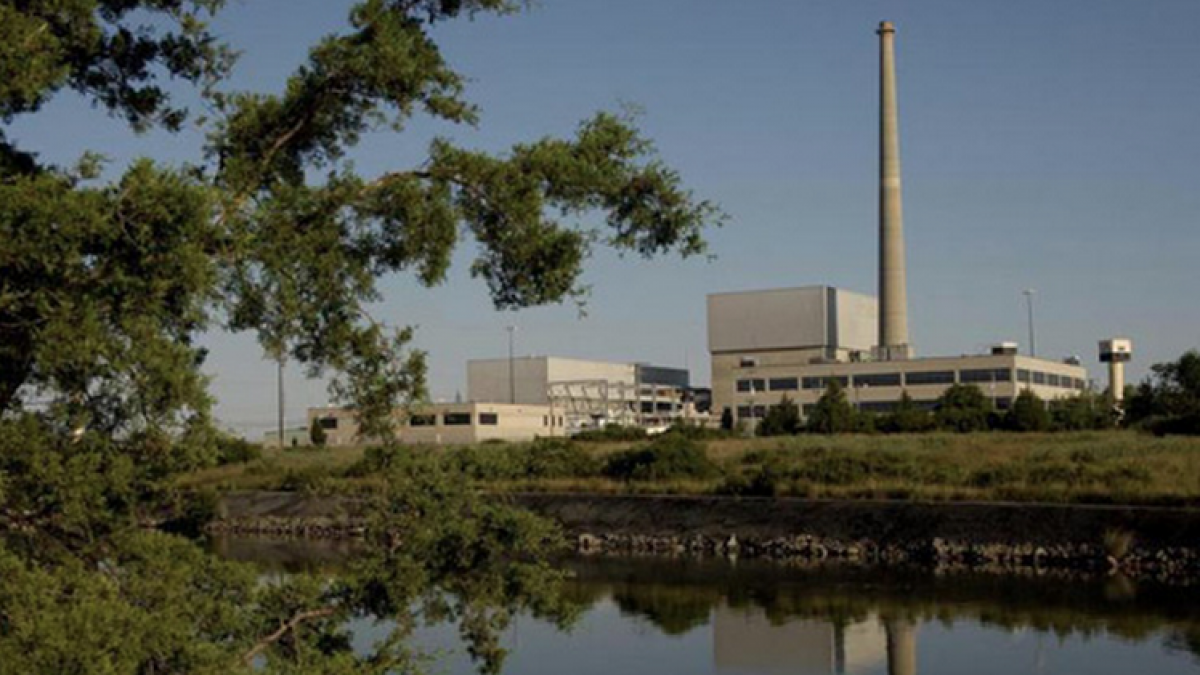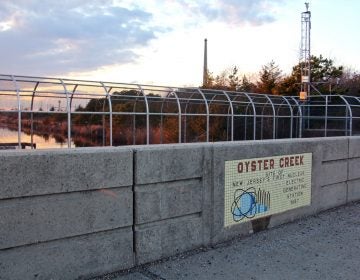Residents skeptical of plans to dismantle Oyster Creek nuclear plant
Residents mistrust Holtec’s assertion it can decommission the Oyster Creek site in 8 years, as opposed to the 60 years proposed by the previous owner.

Oyster Creek Generating Station in Forked River. (Exelon Corporation, file)
Residents in Ocean County, New Jersey, are skeptical of plans to dismantle the Oyster Creek nuclear power plant, which includes an accelerated timeline for removing the facility’s spent nuclear fuel and storing it indefinitely in casks onsite.
More than 150 people attended a town hall Thursday night to grill representatives from the Nuclear Regulatory Commission and Camden-based Holtec International, which is overseeing the decommissioning process together with Canadian company SNC-Lavalin.
They also implored U.S. Rep. Andy Kim, who hosted the event, and other elected officials in the audience to hold Holtec accountable.
“You need to protect us,” said Barnegat resident Marianne Clemente, 73.

Many questions focused on Holtec’s assertion it can decommission the plant in six to eight years thanks to new technology and streamlined processes. Exelon, the company that operated the plant, had proposed a 60-year timeline.
“What technology miraculously got discovered to take you from 60 years to six years?” Clemente asked.
Other residents raised concerns about the safety of storing spent fuel onsite — a virtual necessity given there are few alternative places to put the waste. Holtec wants to build an interim nuclear waste storage facility in New Mexico but is yet to win federal approval to do so, and the U.S. government has not established a permanent repository.
“Do you have the research and the proof that you can monitor whether or not there is hydrogen gas build-up in those casks once they are sealed?” said Janet Tauro, an environmental activist with the group Clean Water Action.

Jeff Dostal, a Holtec representative, assured residents that the casks used to store spent nuclear fuel are so strong they can withstand missile strikes.
But he acknowledged there is still uncertainty around some aspects of the decommissioning, including how to transport nuclear waste if the proposed New Mexico facility does win approval.
In the end, there were more questions asked than answers offered in the cafeteria of the Lacey Township Middle School, just a few miles from the nuclear plant. Kim said it was just the beginning of an ongoing conversation.
“These are big complicated issues, and you are right to have concerns, you’re right to have fears about different things as we are trying to get more information,” Kim told residents.
Dostal said Holtec will host an informational session on Sept. 23 to give residents another chance to ask questions, while the Nuclear Regulatory Commission has a public meeting scheduled on Oct. 3 in Manahawkin to discuss the potential role of a local community advisory board.
Oyster Creek was the nation’s oldest operating commercial nuclear power plant until it shut down last September after 49 years in operation.

Holtec purchased the 650-megawatt facility from Exelon Corporation in July, and with it assumed the plant’s $1 billion trust fund for dismantling the site.
Holtec says a faster decommissioning helps the community because it allows the site to be repurposed. Moving more quickly also would provide profit for Holtec. It’s getting paid from the $1 billion trust fund and it gets to keep any money left over if it costs less than that.
Oyster Creek is not the only site going through this process. The Nuclear Regulatory Commission is currently overseeing the decommissioning of about 20 other sites across the country.
That includes one unit at Peach Bottom station in York County, Pa., and one unit at Three Mile Island, in Dauphin County, Pa. Both facilities are still operating with other reactors, although Three Mile Island is scheduled to shut down completely next month.
WHYY is your source for fact-based, in-depth journalism and information. As a nonprofit organization, we rely on financial support from readers like you. Please give today.



